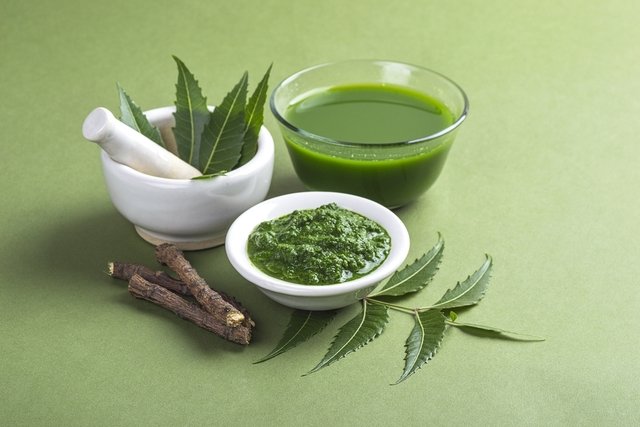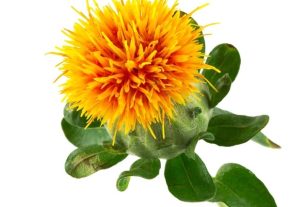Neem is an Indian tree rich in isoprenoids, nimbolide and nimbidin, which are phytochemical compounds with antifungal, antiparasitic and antiseptic action that help treat problems such as acne, dandruff, psoriasis and chicken pox.
Furthermore, Neem, also known as neem, sacred tree, or tree of life, also contains bioactive substances with repellent action, such as azadirachtin and meliantrol, which help fight ticks, flies and mosquitoes.
Neem oil is the best-known product from this tree, which can be found in liquid form, or as an ingredient in shampoos, toothpastes, repellents, deodorants and soaps. In addition, Neem can also be found in powder and leaf form, for preparing teas.

What is Neem used for?
Neem can be used to help treat situations such as:
1. Help treat skin problems
Because it has antibacterial, antiseptic, antifungal and anti-inflammatory properties, Neem oil can be applied to the skin to help treat problems such as eczema, psoriasis, allergy wounds, boils, ringworm, chicken pox and warts.
2. Treat changes in the mouth and gums
Neem contains nimbolide, azadirachtin, nimbidin and nimbin, which are phytochemical compounds with bactericidal, antiseptic and analgesic properties. Therefore, Neem can be used to treat changes in the mouth, such as gingivitis, toothache and candidiasis.
Furthermore, because it has bactericidal action, Neem also helps prevent the appearance of bacterial plaque, an invisible film with bacteria that forms on the teeth, which can cause cavities and tartar. Find out more about what bacterial plaque is.
3. Maintain hair health
By reducing excess oil and seborrhea on the scalp, topical use of Neem helps maintain hair health, preventing hair loss and dandruff.
Neem also has antiparasitic and insecticidal action, helping to treat lice. See other tips for treating lice.
4. Repel insects
Because it contains substances with repellent action, such as azadirachtin, salamin, vilasinin and meliantrol, Neem is used in the preparation of insecticides and repellents, helping to combat ticks, flies, fleas, cockroaches and mosquitoes.
5. Help with acne treatment
Neem has a fungicidal, antiparasitic, antibacterial and anti-inflammatory action, helping to treat acne by inhibiting and fighting the bacteria responsible for this inflammation.
6. Help with glucose control
Some studies(1) (2) show that ingesting Neem leaf and bark extract can help control blood glucose levels, preventing insulin resistance and diabetes.
However, studies in humans are still needed to prove this possible benefit of Neem.
7. Maintain liver health
Because it contains antioxidant and anti-inflammatory properties, Neem can maintain liver health, protecting this organ against damage caused by the use of medications and free radicals, for example.
However, scientific studies on humans are still needed to prove these benefits of Neem on liver health.
How to use
Neem can be found in the form of oils. In addition, Neem is also used in the manufacture of shampoos, toothpastes, repellents, deodorants and soaps, and can be found in the form of leaves or powder for preparing teas.
1. Neem Oil
Neem oil can be applied pure, or diluted in other vegetable oils, to help treat skin and hair problems. Furthermore, this oil can also be used to prepare natural repellents.
To do this, simply clean your skin or scalp and dry well. Afterwards, dilute 2 to 3 drops of Neem oil in 1 tablespoon of jojoba, rosehip or avocado vegetable oil and apply to the scalp or skin once a week.
To prepare a natural repellent, simply dilute 3 drops of Neem oil in 1 tablespoon of coconut or jojoba oil. Mix well and apply to the skin.
2. Neem Tea
To make tea, simply boil 1 liter of water. After turning off the fire, add 5 Neem leaves to the water, cover the pan or kettle, and let it rest for 5 minutes. Strain to drink.
However, it is important to remember that there are still no studies that prove the safety and adequate dosage of Neem tea. Therefore, the use of this tea should only be under the guidance of a doctor or other health professional specialized in the use of medicinal plants.
3. Neem powder
Neem powder can also be used in masks to help treat changes in the face and mouth. For the face, you can dilute 1 tablespoon of Neem powder in 1 tablespoon of honey and apply to a clean, dry face. Leave to act for 10 minutes and rinse under running, warm water. Use this mixture once a week.
As for hair, you should dilute 1 teaspoon of Neem powder in 2 tablespoons of water. After washing and drying your hair, apply the mixture to your scalp. Let it rest for 15 minutes and rinse with warm water. This mixture can be used once a week.
Possible side effects
Neem intake should only be done under the guidance of a nutritionist or herbalist, as its consumption for long periods and in excess can cause liver or kidney problems.
Who shouldn’t use
The use of Neem in the form of oil, powder or tea is not recommended for children. Just as this plant is not recommended for pregnant or breastfeeding women.
As there are no studies that confirm the safety of ingesting Neem, the use of tea from this plant should only be done under the guidance of a doctor or other health professional specialized in the use of medicinal plants.

Sign up for our newsletter and stay up to date with exclusive news
that can transform your routine!
Warning: Undefined array key "title" in /home/storelat/public_html/wp-content/plugins/link-whisper-premium/templates/frontend/related-posts.php on line 12
Warning: Undefined array key "title_tag" in /home/storelat/public_html/wp-content/plugins/link-whisper-premium/templates/frontend/related-posts.php on line 13



